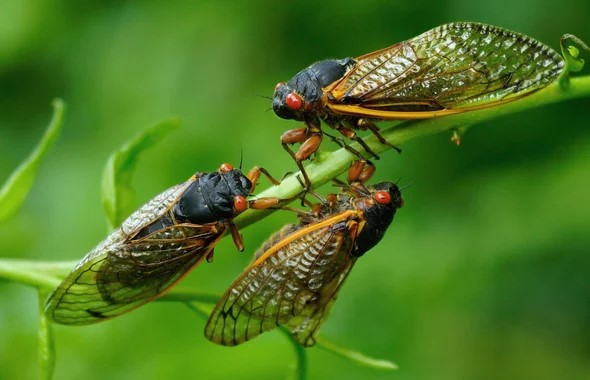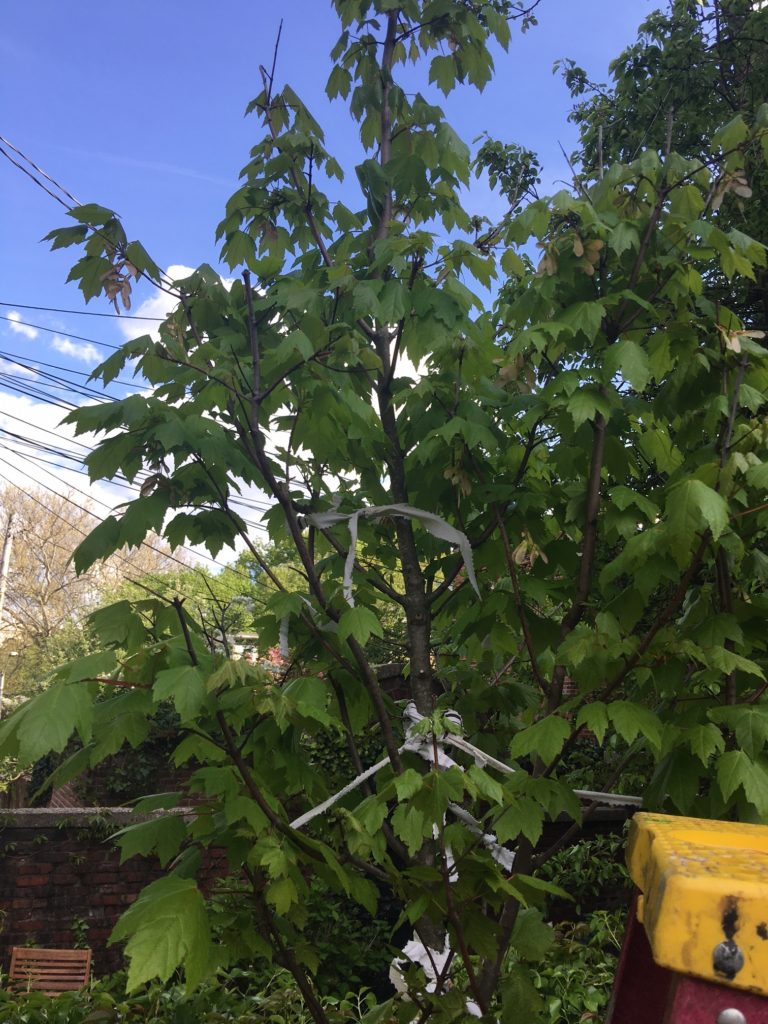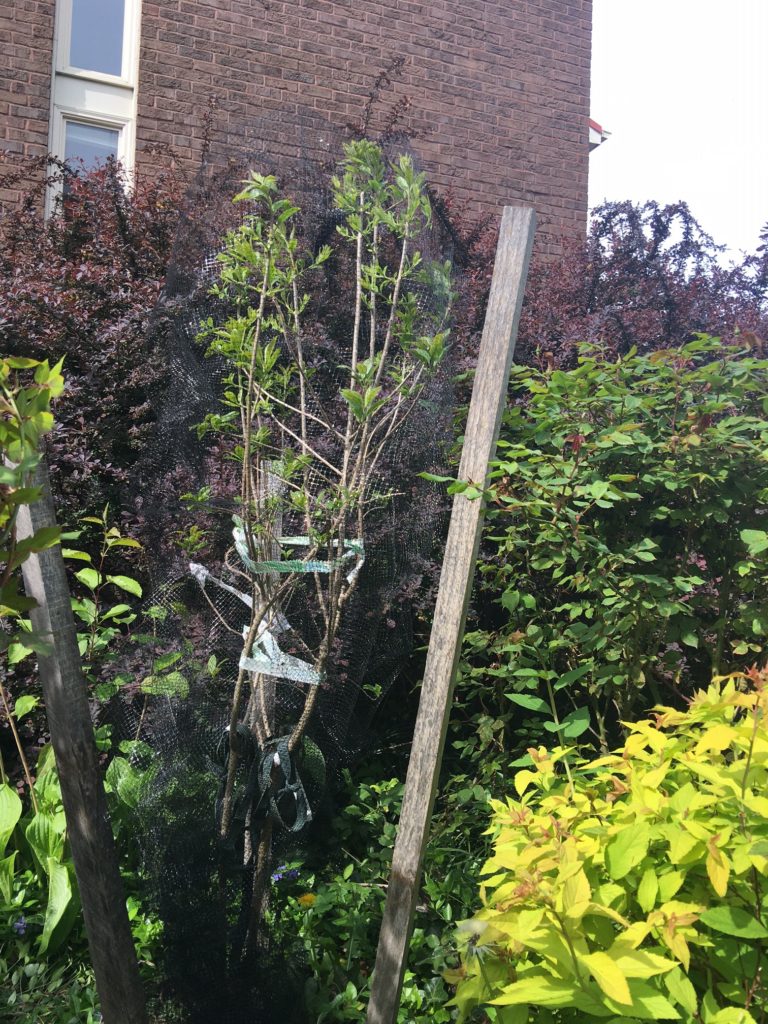Prepping young trees for the oncoming Brood X cicada swarm

It’s commonly said that woody plants of < 2 years age and < 10 ft. tall will be especially vulnerable to the onslaught of a very loud insect that loves small branches for making slits in to place their eggs. In our area of the Mid-Atlantic region, the cicadas are expected to start emerging from the ground in as little as a week from now.
Davey Tree has at its website some helpful information such as “cicadas prefer to lay their eggs on branches that are 0.25” to 0.5” round. So, that means they prefer:
- Oak trees
- Maple trees
- Fruit trees (especially cherry and pear)
- Hawthorn trees
- Redbud trees
- Young trees since these branches are the perfect diameter”

The image shown here illustrates the results of our gently drawing the branches closer to the trunk on a Red Maple (Acer rubrum) with old bed sheet ties so as to allow for less damage to young branches and netting used. Linked here is a source for plastic (sadly) netting we’re using where the key is that the holes must not be more than ¼” wide.
When installing the netting, we’ve so far only used the approach that an informed friend calls: “wrapping like a taco”. So, we’ve looked to close the netting alongside the tree rather than over it like a drape. And, endeavored to leave room at the top for tree growth for the 8 or so weeks the netting will be in place.
We’re using a standard desk stapler to shut off the openings of the netting which we first turn over onto itself a couple of times, at least, to insure the staples will not rip the netting in a high wind so potentially opening the trees to flying cicadas.
When finished wrapping the tree branches, we gather the netting in a tight bunch around the trunk just below the lowest branches and secure with a zip tie. Cicadas coming out of the ground will first climb up a tree trunk, then fly around rather clumsily if climbing is impeded.

The wrap job completed is of a multi-stem White fringetree (Chionanthus virginicus).
We wish you good luck in protecting your young trees. For us, among the many trees we’ve planted within the last two years, we’re first choosing to protect the ones we’ve had to regularly carry water to during dry, hot spells over the summer months as no water spigot is anywhere nearby.
(Featured Image ©Scientific American)